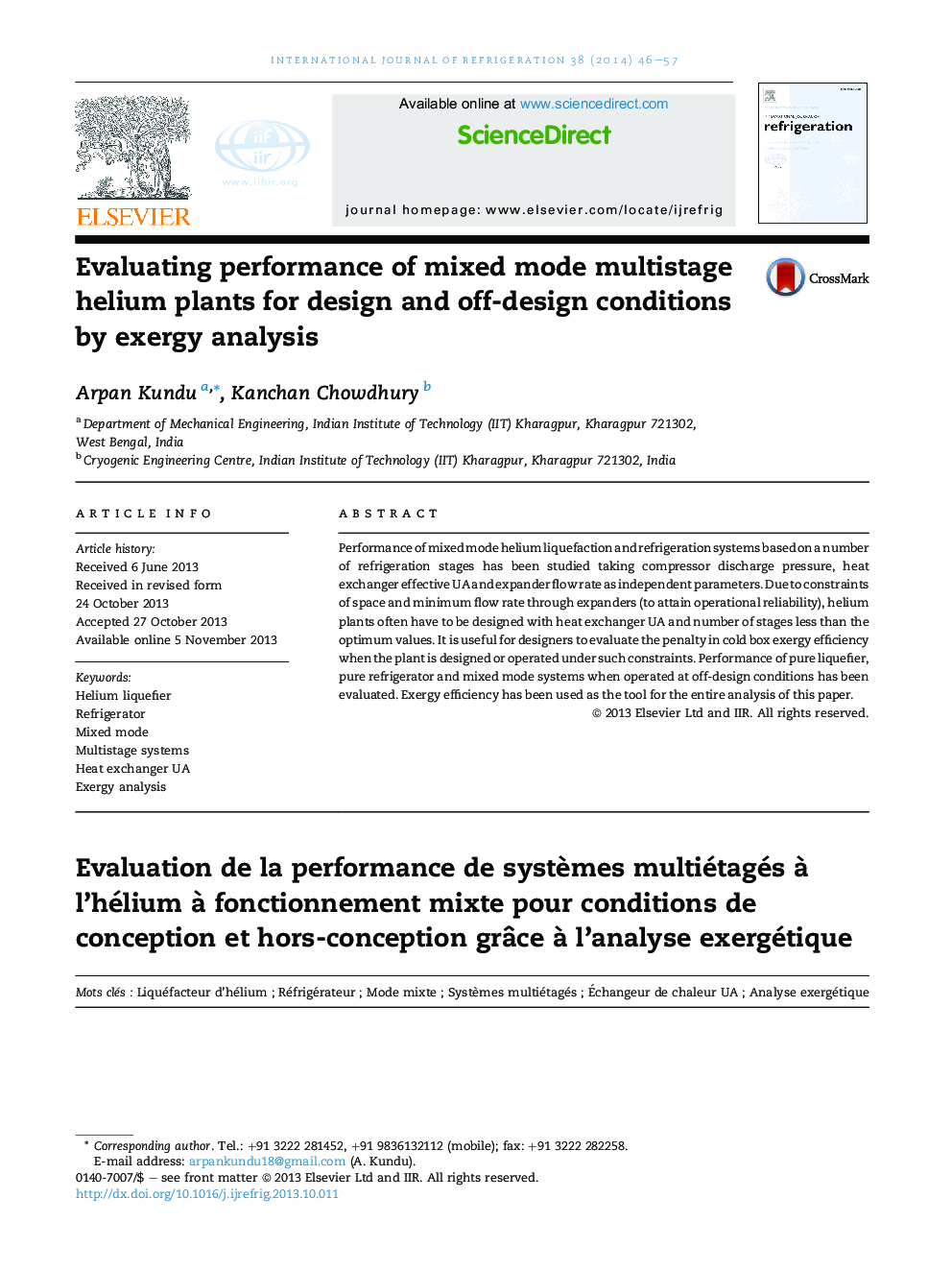| Article ID | Journal | Published Year | Pages | File Type |
|---|---|---|---|---|
| 790180 | International Journal of Refrigeration | 2014 | 12 Pages |
•Optimum pressure decreases as number of stages increases. It is lower for a refrigerator.•Saturation heat exchanger area is much larger for a refrigerator.•Use of smaller heat exchanger area penalizes 50/50 mode the least and refrigerator the stiffest.•With higher stages, a liquefier has more flexibility in operation than a refrigerator.•For higher exergy efficiency, a plant should be operated closest to its design mode.
Performance of mixed mode helium liquefaction and refrigeration systems based on a number of refrigeration stages has been studied taking compressor discharge pressure, heat exchanger effective UA and expander flow rate as independent parameters. Due to constraints of space and minimum flow rate through expanders (to attain operational reliability), helium plants often have to be designed with heat exchanger UA and number of stages less than the optimum values. It is useful for designers to evaluate the penalty in cold box exergy efficiency when the plant is designed or operated under such constraints. Performance of pure liquefier, pure refrigerator and mixed mode systems when operated at off-design conditions has been evaluated. Exergy efficiency has been used as the tool for the entire analysis of this paper.
